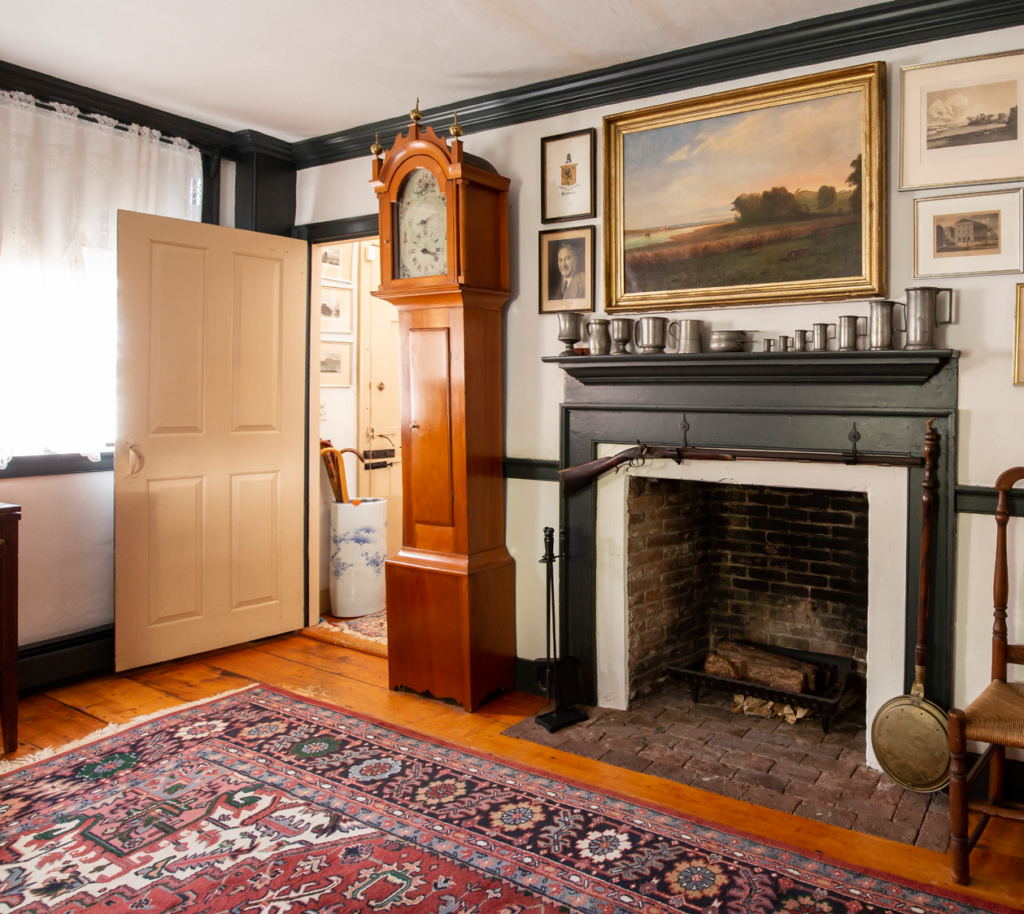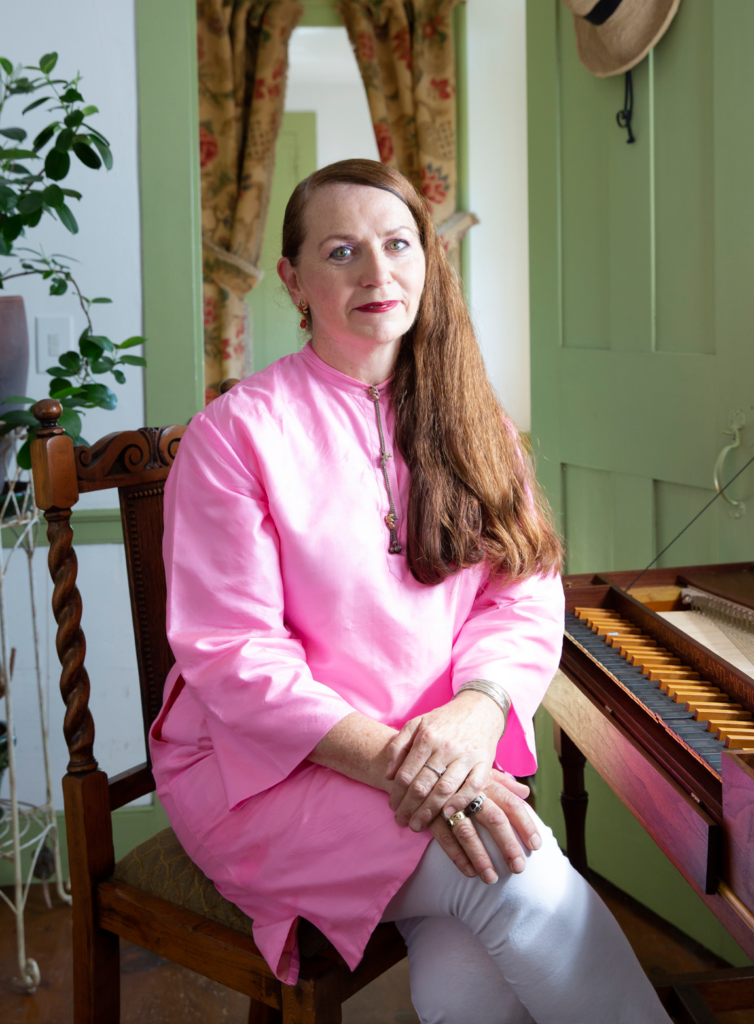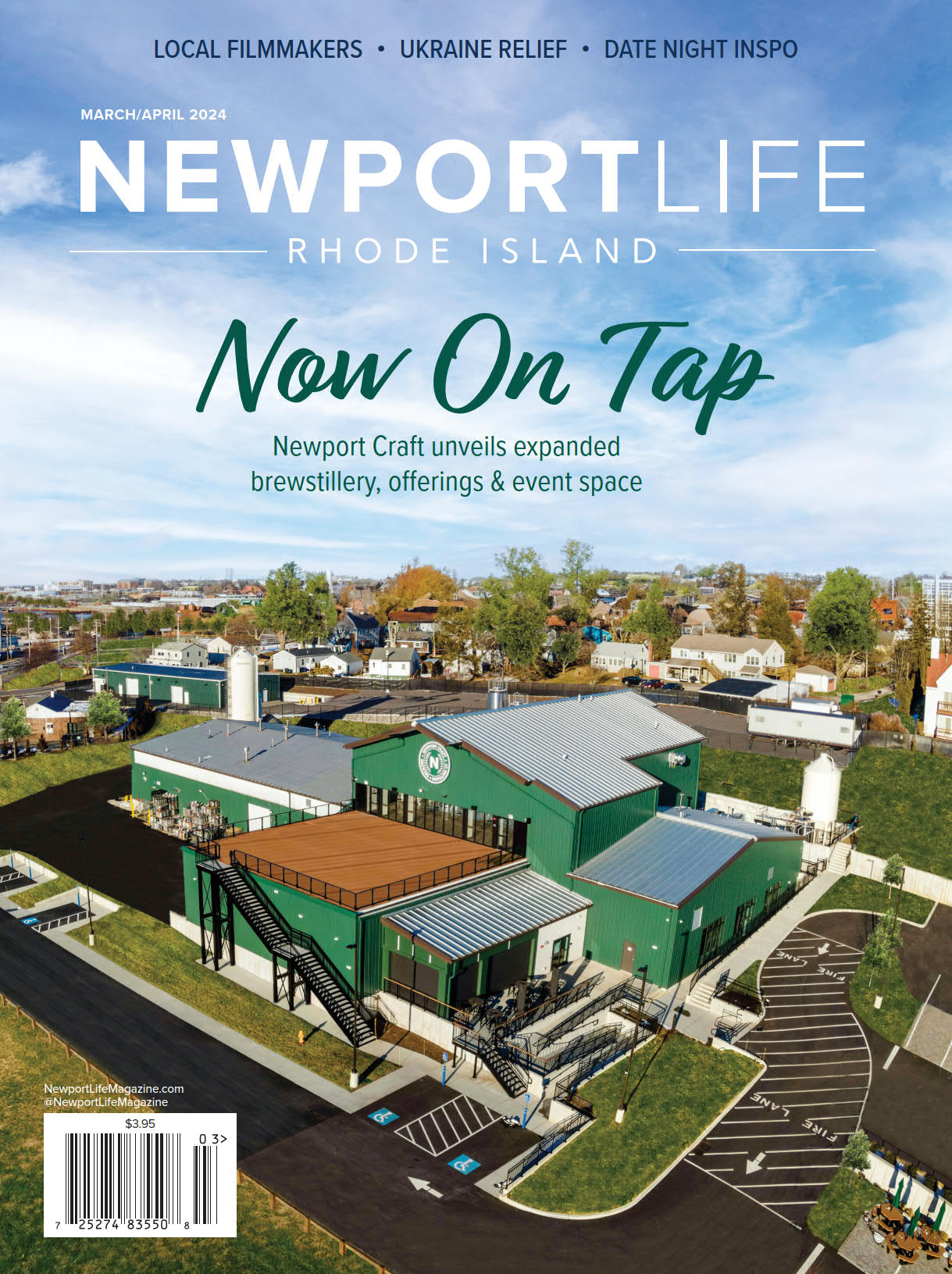New Lease on Life
The Newport Restoration Foundation entrusts nearly 80 of its properties to “stewards,” who get equitable rents and a chance to live with history.
By Jennifer Blot

Ned Sherman signed the lease on his house in The Point more than 35 years ago. That’s a mere blip in time in a storied place like Newport, where one of Sherman’s ancestors arrived in 1638. But it’s a significant stretch to lovingly care for a home owned by someone else — in this case, the Newport Restoration Foundation.
Sherman is a steward for the nonprofit organization. On the surface, that may not seem a lot different from being a renter. Many of the same formalities exist — the application process, year-to-year lease, approval to have
pets — but there’s a catch: The individuals who live in NRF’s 200- and 300-year-old houses agree to “take a share of the responsibility for preserving this unique part of our American heritage.” They also come to view their relationship with the organization and allegiance to the homes themselves as something deeper. For Sherman, who has been known to invite curious tourists inside from time to time, the arrangement is a perfect match.

His kitchen is small and his staircase is steep (something he maneuvers more slowly since losing his eyesight), but Sherman wouldn’t change a thing. “I love the fireplaces, the hardware, the handles, the floorboards — the ambience of it,” he says of the ca. 1795 cottage. Antiques that belonged to his late father — regional period furniture and clocks, pastoral paintings, the pewter tankards lined up on the fireplace mantel — provide the dwelling with a stately yet cozy feel. Sure, Sherman acknowledges, “If I had bought a house when I first moved here, I would have paid for it by now with a 30-year mortgage.” But the pride of stewardship seems to trump the pride of ownership.
Sherman knows everyone on the NRF team, from property manager Sandy Williams-Brown, a relative

newbie, to paint supervisor Brian McCarthy, who came aboard 37 years ago. “It’s almost like we’ve become family with a lot of these tenants,” explains McCarthy, who used to mix custom paints for Doris Duke, the heiress and philanthropist who founded NRF in 1968. Her commitment to preservation, which compelled her to buy and renovate (and in some cases, relocate) historic buildings around Newport in the late 1960s and early ’70s, is referenced often by staff and stewards.
Today, the organization owns more than 80 properties, the majority of which are rented to stewards. For McCarthy, who is part of a crew of 11 devoted to interior and exterior maintenance, the work is continuous — but worth it. “I’ve painted every single one of our houses a good five to six times,” he acknowledges. Rents range from $1,280 to $6,400 a month, which are considered market rate. Each time a house becomes vacant,
Williams-Brown sends an email blast to her prospect list of about 200 preapproved individuals, then relies on a no-nonsense system of filling it: The first person to return the necessary paperwork gets first dibs. In addition to a fairly standard prequalification process, applicants must earn three times the monthly rent of the property they applied for. Homes are unfurnished — and, notably, lack certain modern amenities like central air conditioning — but come with a parking spot, basic kitchen appliances, and the peace of mind that maintenance needs will be handled promptly by NRF.
It’s not unusual for stewards to request permission to add practical and aesthetic touches. In the 23 years that business and life partners Sandra Liotus and David Crampton-Barden have lived on William Street, they’ve installed a chandelier for overhead light in the kitchen, added a built-in desk with bookshelves and a banister along the steep, narrow staircase. They also created a lush paradise in the once-barren backyard, which now boasts a pear tree and a pond rippling with koi and black catfish.

The duo had to get creative when furnishing the diminutive ca. 1800 English cottage–style home they share with three cats. Their television is tucked inside an armoire; the bathroom doubles as a small workout space; and the attic has been transformed into an art studio for Liotus. (Fortunately for
Crampton-Barden, who is 6-foot-4, the ceilings are high.) Like Sherman, Liotus occasionally invites a passerby inside, and if they’re lucky, she’ll send them off with a copy of the book Extraordinary Vision: Doris Duke and the Newport Restoration Foundation, which she’s purchased in bulk. Steep, winding staircases are a trademark of many of these homes, but Peter and Nancy Harris were willing to babyproof
(somehow, their white plastic baby gates blend in seamlessly with the centuries-old home) in exchange for the huge backyard, with its tree swing for their 1- and 5-year-old sons. Like a number of NRF properties, their spacious Elm Street home started life a few hundred years ago at a different location. While the six fireplaces were deemed unsafe to use, the family has found creative ways to repurpose them, including as a storage space for the kids’ shoes. The Harrises say the relationship between the stewards and NRF is incredibly personal. “There’s a sense of community within this rental (organization), which is pretty unusual,” Nancy says. “You don’t get this in other places.”
Eileen and Brett Pollina live in the bottom flat of the Greek Revival–style Clarke Burdick House on Thames Street, one of two duplex properties owned by NRF. In their 20s, the couple is a rare demographic in the stewardship program. They found the home four years ago through a Craigslist ad (a platform NRF no longer uses) and were initially drawn to the location by its proximity to the beach and the retail corridor where Eileen opened a stationery and gift shop. They immediately fell in love with the big windows, the spacious backyard for Brett’s surfboards, and period features like the door latch and lock that none of their friends can operate. And though they hope to own a home someday, for now, Eileen says, “I like to know my rent is going toward the foundation — going to a place of good.”
While the Pollinas’ interior has a contemporary “beachy” vibe, their upstairs neighbor, David Crompton, has filled his space with furnishings that are closer in age to the 1835 house. Crompton moved in just
over a year ago after spotting the vacancy on the NRF website, which he checked regularly for about three years. Though originally from the area, he’d been living in North Carolina and envisioned splitting his time between both places. Within weeks, however, he put his North Carolina house on the market and settled into the significantly smaller NRF unit. “It’s a particular person who wants to put up with what you have to put up with as far as modest kitchens, parking issues, inner-city living, quirky floor plans, weird steps,” Crompton says. “They all come with a variety of specific quirks, and that’s what makes them so wonderful to live in.”
Despite the challenge of living in an antique house, Williams-Brown says it’s rare to encounter any cases of renter’s remorse. “This town is based on preservation and historical homes, so usually people are very familiar with what comes with living in this type of home,” she says.

Hope Alexander, who lives farther down Thames Street in a ca. 1740 house with her husband and their two Norwich terriers, concurs. “If you’re someone who really requires the comforts and luxuries of modern life, perhaps this isn’t the house for you. What this house does offer is actually more valuable than all of the comforts and luxuries of modern life — it teaches you the pleasures of living more simply, of living with some restraint.” Alexander has lived in three NRF properties over the years and, like many
stewards, owns property outside of Rhode Island. But there’s no comparison. “When you’re a homeowner, it becomes all about you and protecting your investment,” notes Alexander. “But when you are a steward
and partnering with a group like the NRF, it’s not about you so much. That’s really freeing, and also very satisfying to be in a partnership where you are working with other people to take care of something.”
The majority of NRF properties are in Newport, with a cluster of six homes on Prescott Farm spanning Portsmouth and Middletown. James and Natalie Dwyer, along with their 13-year-old daughter, live
in the ca. 1730 Nichols-Overing House, the farm’s “crown jewel” and the site of the capture of General Prescott by William
Barton during the Revolutionary War. When they first toured the house, Natalie was overwhelmed by the size — there are five bedrooms and even a butler’s kitchen — but James was immediately smitten. “I
saw the staircase and the 10-foot ceiling and I said, ‘This is it, I’m home.’”
Not long after they moved in, a former steward of the house dropped off a binder filled with research he’d done on the property. At some point, Dwyer knows he’ll do the same for his successor.





